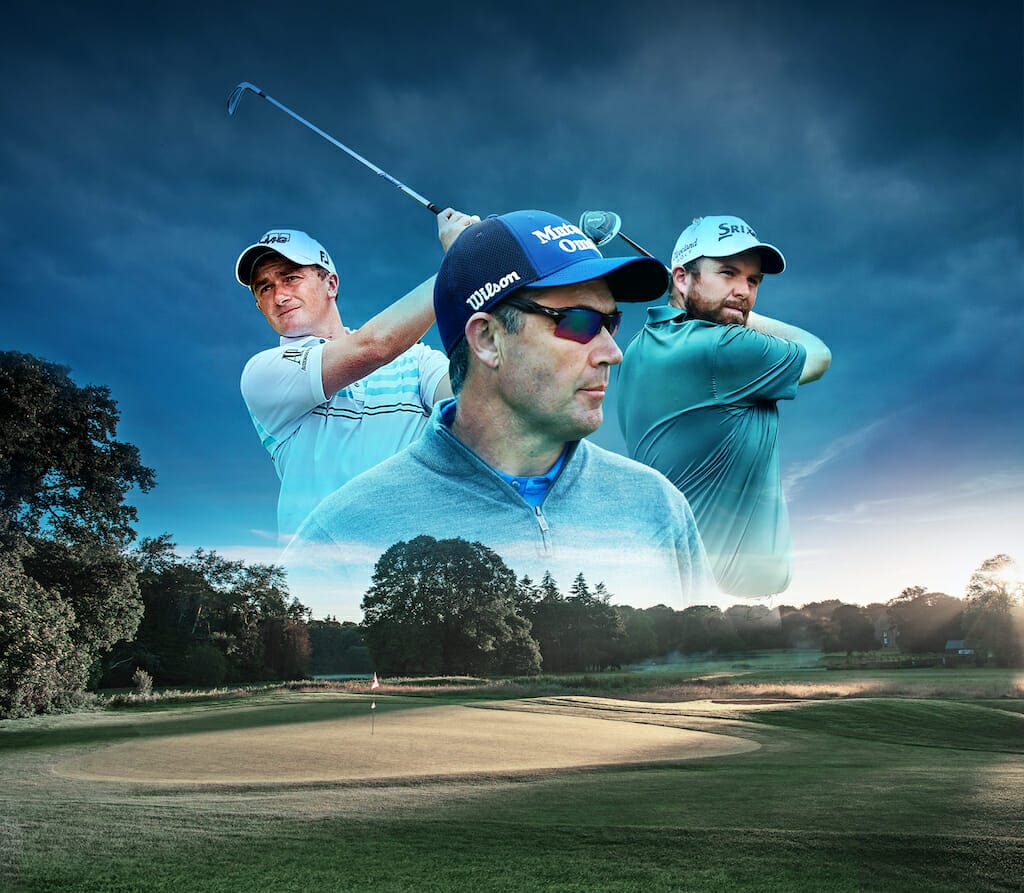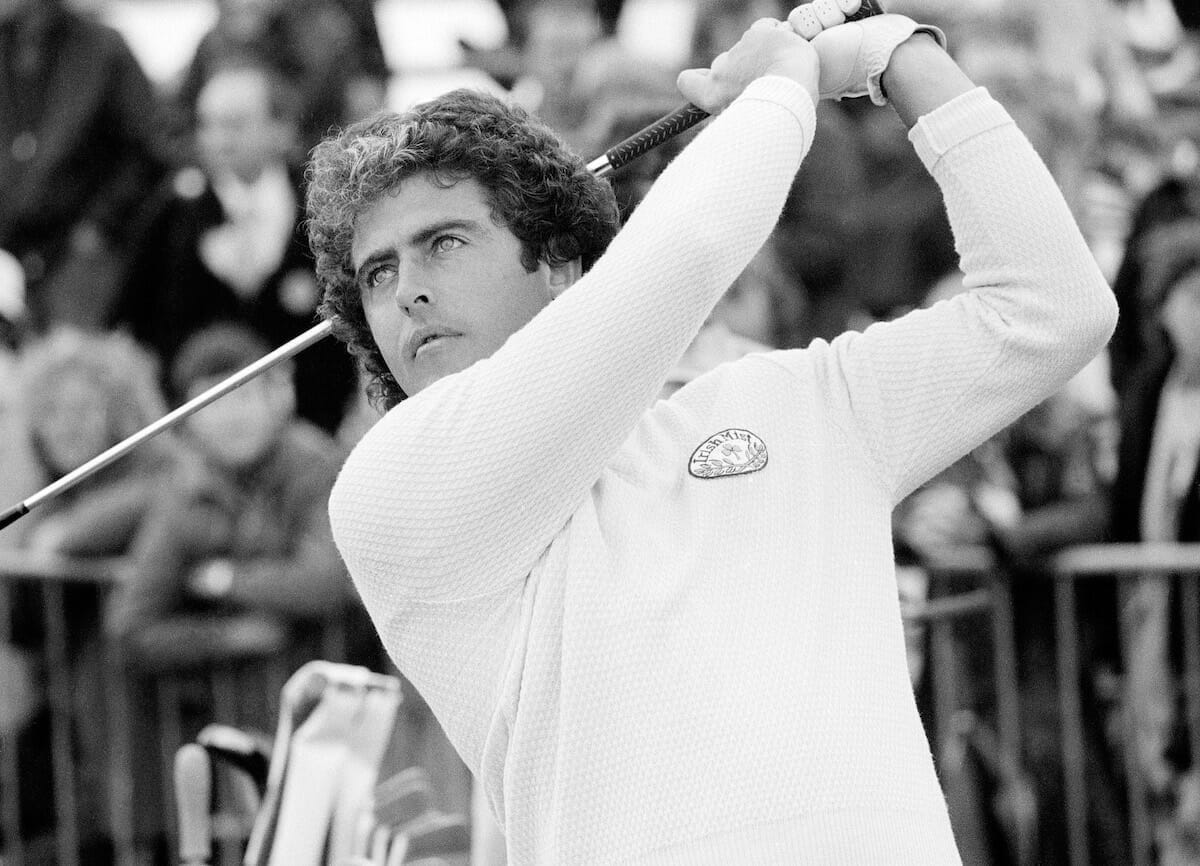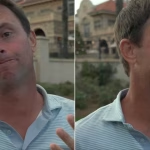We, the people, will not have an opportunity to attend the Dubai Duty Free Irish Open at Galgorm Castle due to the Covid-19 crisis.
However, we, the people, can take some consolation from the survival of our national Championship on a 2020 European Tour schedule decimated by the pandemic.
If spectators cannot attend in their multi-thousands, as has been the case since the Irish Open was revived in 1975, at least the tournament stays alive when so many other events have fallen foul of the virus restrictions.
It will be different, unique even. For the first time since the Open Championship of Ireland was opened to professionals and amateurs alike 1927, the players will plot their way around an Irish Open course without experiencing the cheers, applause, the ‘ooooohs’ and ‘aaaaahs’ of pivotal moments when putts are holed or missed.
Yes, it will feel strange. There will be no youngsters wandering around the tented village and the environs of the course creating lifetime memories, such as those evoked in a young Pádraig Harrington many moons ago.
Harrington once recalled with great fondness chasing around Portmarnock in the Carrolls-sponsorship era, eating ice cream and watching great players hit wonderful golf shots.
Rory McIlroy, already a prodigy destined for greatness, had his appetite whetted for glory when returning from an amateur event in 2003.
Aged 14, he looked down on Portmarnock from the plane that was descending towards Dublin Airport and could see the Irish Open galleries spread out around the course on which Michael Campbell won the title.
“I remember thinking ‘Hopefully that’s me one day’, he told Paul Kimmage in a Sunday Independent interview in 2017.
Here is an overview of the main men, the moments, the clubs and the sponsors who maintained the Irish Open tradition through the challenging and the good times.
1927-1939: A RISING TIDE
Wentworth professional and 1920 Open Championship George Duncan had a decisive role in the establishment of the Irish Open.
Duncan and fellow English pro Arthur Havers who won The Open in 1923, had accepted an invitation from Portmarnock GC to play a series of exhibition matches in Ireland from late September to early October, 1926
On the last weekend, Portmarnock hosted a dinner attended by the two English golfers and leading Irish golfing figures. Duncan and Havers had been impressed by the opposition presented to them during their visit, and felt that the Irish pros deserved more playing opportunities.
Hence, Duncan suggested that the GUI should consider opening up their Irish Championship – then confined to amateurs – to professionals, and said that if they did so, he would bring at least twenty of his fellow cross-channel pros to compete in such a Championship.
Credit to the GUI, to Portmarnock and the PGA, they all cooperated to present the inaugural Open Championship of Ireland from August 16-18, 1927.
How appropriate it was that Duncan should emerge as champion at Portmarnock with a stunning performance over the final day 36-holes in dreadful weather.
The GUI, as described in the late Bill Menton’s book, “The Golfing Union of Ireland 1891-1991” were delighted with the entries which included Open winners Harry Vardon, JH Taylor, George Herd, Ted Ray, Duncan, and Havers, plus 46 other British professionals and three Americans.
Between 1927 and 1939, Portmarnock hosted the Irish Open six times; Royal County Down, Royal Portrush, and Royal Dublin all staged the Championship three times, and Malone, Cork, and Belvoir Park were one-time hosts.
This era was notable for the victories of the Whitcombe brothers: Charles (1930 at Royal Portrush); Ernest (1935 at Royal Co Down); and Reg (1936 at Royal Dublin).
Bobby Locke of South Africa, later to win The Open Championship four times, took the Irish crown at Portmarnock in 1938.
A year later, England’s Arthur Lees claimed the title at Royal Dublin. He was the last man to win our national title before war broke out.
1946-1953: IRISH BREAKTHROUGH BUT GRADUAL DECLINE
The guns had fallen silent, the blood-letting was over, and golf was back on the agenda.
Portmarnock once more opened its doors to the great and good in the Irish Open, and Fred Daly of Balmoral emerged triumphant.
A year later Royal Portrush staged the Irish Open for only the third time, and Harry Bradshaw stepped forward to eclipse the opposition.
Dai Rees took the honours in 1948 but ‘The Brad’ achieved a hat-trick in 1949.
By 1953, the year Eric Brown, “Broon from Troon” as he was known, won in Belvoir Park, the GUI were at the end of their financial tether in relation to the Irish Open.
The Championship had not been played in 1951 and ’52. The GUI gave it one last shot in 1953, but once the Union assessed the financial outgoings, the Irish Open disappeared from the schedules.
1975: REVIVAL THAT LED TO HALYCON YEARS
Hello world! The Irish Open was given a sweet kiss of life by the PJ Carroll Company of Dundalk, the cigarette manufacturers.
Carroll’s had been sponsors of the Carroll’s International at Woodbrook since 1963, and it continued as part of the new European Tour which began in 1972.
Christy O’Connor Senior was a popular home winner that year. County Louth professional Paddy McGuirk kept the home fires burning in 1973.
A year later Scotland’s Bernard Gallacher won the last Carroll’s International in 1974, after which ambitious plans were laid to revive the fully fledged Irish Open Championship.
The 1975 return to the big time proved a huge turning point in our golfing history when Christy O’Connor Junior beat a field that included recently-crowned Open Champion Tom Watson to huge acclaim.
Watson, like George Duncan 49 years earlier, had some thoughts on how to present the Irish Open to a level which would attract top Tour players. Apart from prize funds, Watson believed that playing the tournament on a world class links could elevate the status of the tournament to a new level.
The Open champion was pushing an open door. It was time to take the next step.
Great credit is due to Carroll’s and their PR manager, Pat Heneghan, because the sponsors rose to the challenge. A combination of showbiz, as in attracting world stars on an appearance money basis, a top venue in Portmarnock, and the passion of Irish sports fans to see the Tour stars ‘live’ proved to be a winning formula.
Television and national media coverage reflected the new appetite for professional golf.
Pat Heneghan’s promotional expertise, and that of his successor Joe Flanagan, created an eagerly-anticipated festival atmosphere for the Irish Open year after year.
Luck played a role as well in terms of the players who came to the fore as great golfers and crowd attractions. Seve Ballesteros took the world by storm with his stirring performance at The Open in Lytham St Annes in 1976.
Seve’s swashbuckling style, his good looks and his youthful exuberance was an irresistible attraction for fans and media.
That same year, a blond-haired American hero named Ben Crenshaw came to Ireland as runner-up in The Masters and emerged as Irish Open champion.
What a great winner he was in terms of star quality and enhancement of the tournament’s prestige at home and abroad.
The European Tour was buzzing in the late Seventies and early Eighties, as Ballesteros, Nick Faldo, Bernhard Langer, Sam Torrance and Ian Woosnam rose through the ranks to become the backbone of a new-found Ryder Cup success.
Ireland also had its first champion of the new era in Dubliner John O’Leary in 1982.
Every year Carroll’s added to the mix of stars, bringing Major champions over from the USA including Hubert Green, Gary Player, Lee Trevino, and the Irish galleries turned up in their multi-thousands each year.
Royal Dublin had three memorable years from 1983-’85 inclusive while Portmarnock was undergoing course improvements. The club could not have wished for better winners in Seve (twice) and Bernhard Langer.
Appearance money was a generally unspoken but worthwhile and necessary investment in attracting the headline stars.
Carroll’s were prepared to invest between €10,000-€25,000 plus air fares and accommodation per man for up to five box office players at the top of the pyramid each year. It all worked towards maintaining the prestige of the Irish Open which was rated by the Tour pros as second only to The Open Championship in prestige and popularity.
1990-1999: MONEY, MONEY, MONEY – THE REAL GAME-CHANGER
Portmarnock Golf Club featured for the last time on Carroll’s watch in 1990. Jose-Maria Olazabal joined Seve on the winner’s roster that year, but it was the end of an era.
Up to then, the organisers paid a fee to the host club for releasing their course to the Irish Open, but that policy was reversed for 1991 and future years. It was suggested at the time that Portmarnock had been asked to stump up the equivalent of €1 million for the privilege of keeping the Open in North County Dublin. Unsurprisingly, they declined.
Luckily for the Tour and the tournament, ambitious owners of new courses queued up to bask in the glare of a European Tour and national flagship event.
Killarney, which was owned by Bord Fáilte, stepped in for 1991 and ’92, while Mount Juliet signed on for 1993-’95 inclusive, and the new Druids Glen welcomed the Irish Open for four years, from 1996-1999 inclusive.
The public did not care about how the tournament was arranged: all they wanted was a chance to see the best players, including our Irish cohort, in action.
How well that worked out was evident from the quality of champions during this decade, including Seve Ballesteros, Jose-Maria Olazabal, Nick Faldo, Colin Montgomerie, and Sergio Garcia.
On the sponsorship front, Carroll’s bowed out in 1993, and Cork brewing firm Murphy’s took on the mantle as title sponsors, making their debut at Mount Juliet in 1994.
Box-office stars such as John Daly and Greg Norman featured at Mount Juliet in 1994 and ’95 respectively, while Ernie Els was the big name for Druids Glen in 1996 – all earning a couple of hundred thousand dollars each for “promotional activity” associated with the tournament.
Many would consider it money well spent. It was, and still is, part of the price of doing business with the best golfers in the world. Prize funds multiplied exponentially from the equivalent of €347,300 in 1990 to €1.4 million by 1999.
The golf boom was well underway in Ireland at all levels. And by ’99 we had Pádraig Harrington, Paul McGinley, and Darren Clarke as established winners on Tour, while Philip Walton attained legendary status as a Ryder Cup hero at Oak Hill in 1995.
2000-2009: A NEW MILLENNIUM BUT MOMENTUM GRADUALLY FALTERS
On the surface, all seemed well with the first ten Irish Opens of the new Millennium, as the money on offer was elevated from €1,632,654 in 2000 at Ballybunion to €3 million for County Louth in 2009.
By 2002, however, the financial aspect had come under serious scrutiny when Murphy’s ended their sponsorship, having invested approximately €25 million in staging and marketing costs during their tenure.
Months passed before finally, in late November ’02, Nissan Ireland were announced as sponsors for 2003. Portmarnock would be the venue – and they weren’t paying for the privilege. In fact, their agreement had only been arranged a couple of weeks prior to the announcement.
The European Tour, Bord Fáilte as it was then, and Nissan Ireland combined to take on the staging costs and the prize money of €2million. Michael Campbell of New Zealand etched his name into the tournament’s history in the last – to date – Irish Open held at Portmarnock.
Carton House (2005/’06) and Adare Manor Hotel & Golf Resort (2007/’08) each came on the roster twice, as did County Louth in ’04 and 2009.
The victories of Pádraig Harrington in 2007 and the sensational amateur performance of Shane Lowry in 2009 were huge boosts for the Irish Open, particularly as Harrington went on to win the Claret Jug a few months later in ’07, and confirmed his quality with The Open and the US PGA titles in 2008.
2010-2019: RORY McILROY AND PEACE PROCESS REVITALISE THE IRISH OPEN
Killarney in 2010 and 2011 was a great town for the Championship. It was a perfect venue for a genuine festival atmosphere. However, 2012 ushered in a new departure, thanks the success of the Peace Process and government cooperation and investment North and South which brought the tournament North to Royal Portrush.
The success of Pádraig Harrington, Graeme McDowell, Rory McIlroy and Darren Clarke in winning Major titles between 2008 and 2011 had given the Irish huge influence with Tour executives.
In fairness, George O’Grady and his team had no difficulty in aligning their vision for the Tour and the Irish Open with that of the Major champions, particularly the Northern trio who desperately wanted to see the national Open brought across the border.
European Tour attendance records were broken, as was the geographical and political barrier that had kept the Championship out of the North since Belvoir Park in 1953.
However, it should be noted that the prize fund reduced from €3 million at Killarney in 2010 to €2 million – an indication of the reluctance of title sponsors to come on board as a result of the aftermath of the 2008 financial crisis.
Carton House and Fota Island followed Royal Portrush in 2013 and 2014 respectively, all with €2 million in prize money, backed mainly by the Tour and government investment.
Then the Rory factor lit up the skyline. McIlroy, by then a four-time Major winner, joined with Dubai Duty Free and the Tour for 2015 in a new and exciting innovation – a player headlining the Championship for the first time via the Rory McIlroy Foundation.
Dubai Duty Free took a punt for a year, and cautiously enough too, as they added €500,00 to the kitty, bringing the money on offer for the players to €2.5 million at world-renowned Royal County Down.
Unfortunately Rory did not make the cut, but the Foundation was able to assist local charities in a big way.
The following year, 2016, The K Club hosted, Rory won in dramatic fashion, and again, nearly €1 million was raised for charity – helped considerably by the new DDF Irish Open champion donating his €666,000 first place prize money from the new €4 million prize fund.
Then it all went to a new level. The DDF Irish Open and Rory’s Foundation hit the big time when the Tour promoted the championship as one of its elite Rolex Series events, making it a US$7 million dollars (€6.5 million) tournament for Portstewart in 2017.
Jon Rahm was a great winner. Russell Knox triumphed at Ballyliffin in 2018, the year in which Rory stepped down as tournament host.
He did so with the thanks of everyone involved in golf on the island of Ireland for making the Irish Open great again.
“When we started the Rory Foundation, this wasn’t some plan that we had from the start.
“It was more me thinking, how can I, or as a team, how can I go to The Irish Open and it mean something more.
“Not just going and spending a week on a golf course somewhere and trying to play the best that I can, but try to go back and basically give me a reason to go back for every year; and not just for myself, but for other people.
“So that was the reason in the end. I wanted a real, fulfilling reason to go back every year and give it my all. That’s really what it is,” he said.
“There’s two sides to that. I wanted to with The European Tour and with everyone else, try and make The Irish Open one of the best tournaments in the world, and at the same time, we can help so many other people by trying to achieve that,” said McIlroy.
The four-time Major winner opted out of the 2019 DDF Irish Open, citing a desire to rest before The Open Championship.
His absence drew plenty of comment for and against, but even without McIlroy, the championship was a sell-out.
Lahinch, and all of County Clare put on a marvellous show. Paul McGinley took over as tournament host, and, no surprise, he was a great ambassador for the Championship and the country.
Jon Rahm produced the goods on the course to claim his second Irish title, and Lahinch rivalled Killarney for the feel-good festival factor.
Happy days, all the more so because of what has happened so suddenly, so shockingly, with the Covid-19 disaster just a couple of months into this year.
In that context, the continuation of golf, albeit in truncated fashion, and especially the Dubai Duty Free Irish Open, sends a message of optimism that is badly needed at this time.


























Leave a comment